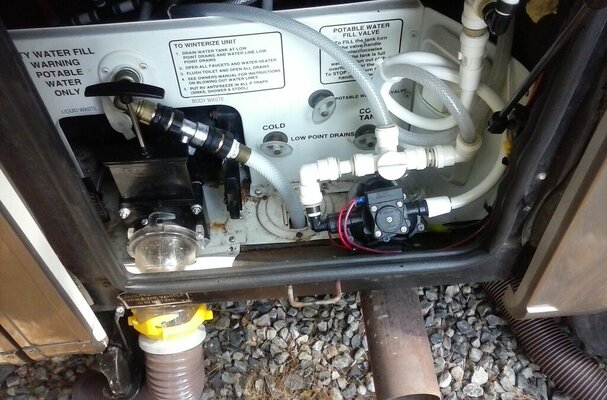Tiercel
Well-known member
Thanks, Mark.Common for a leaking slide valve... Short term maybe just keep a plastic tray or bowl you put under the cap to catch the drippage before you hook up your drain hose.
I had that issue when I first got my RV. Tried various remedies like mineral oil, exercising the valve, a generous spray around the seal to dislodge any bits, nothing helped. Finally concluded the valve was bad so set about to replace it. That's when things got interesting. Upon removal I discovered the valve slide was encrusted with what looked like mortar, or extreme water scale. The outlet of the black tank was also encrusted with it. At first I thought just what the hell did those folks eat? Or was this industrial strength toothpaste abrasive? The accretion on the slide actually abraded away the seal which is what caused the leak. The gray tank side was perfectly clean and the valve was OK, but since it was apart I replaced both. I learned the crust is called struvite which is a mineral formed by a chemical reaction with waste and some types of tank treatments. There are a few informative videos on utoob that describe this. I literally used a large screwdriver to chisel out what I could upstream of the valve a bit and it left of pile of slag in my wet bay. You haven't lived until you've had your arm up the business end of your black tank. So the lesson here is careful what treatments you put in your black tank. I have yet to have an issue with dumping or odors using just plain water, a squirt of Dawn and a shake of borax so it escapes me why the PO would've had a need to add chemicals and cause the struvite issue. At the end of the day though if your gray or black tank valves drip there's probably not many options short of replacing the valves. Not a horrible job in general, I've seen worse working on plumbing in my S&B.
Mark B.
Albuquerque, NM
I started on a drained tank and filled it a little over 1/3 with a cup of borax and a cup of Dawn just in case it had been neglected. I filled the tanks full before I dumped just to get a strong flow. In the spring I will look into the issue a little further. Even with the smallest leak, sitting for months before our trip might have accumulated some leakage. Maybe the valve was not shut as tight as it could have been. I will definitely use the pan/tray idea if I find the leak is not resolved.

